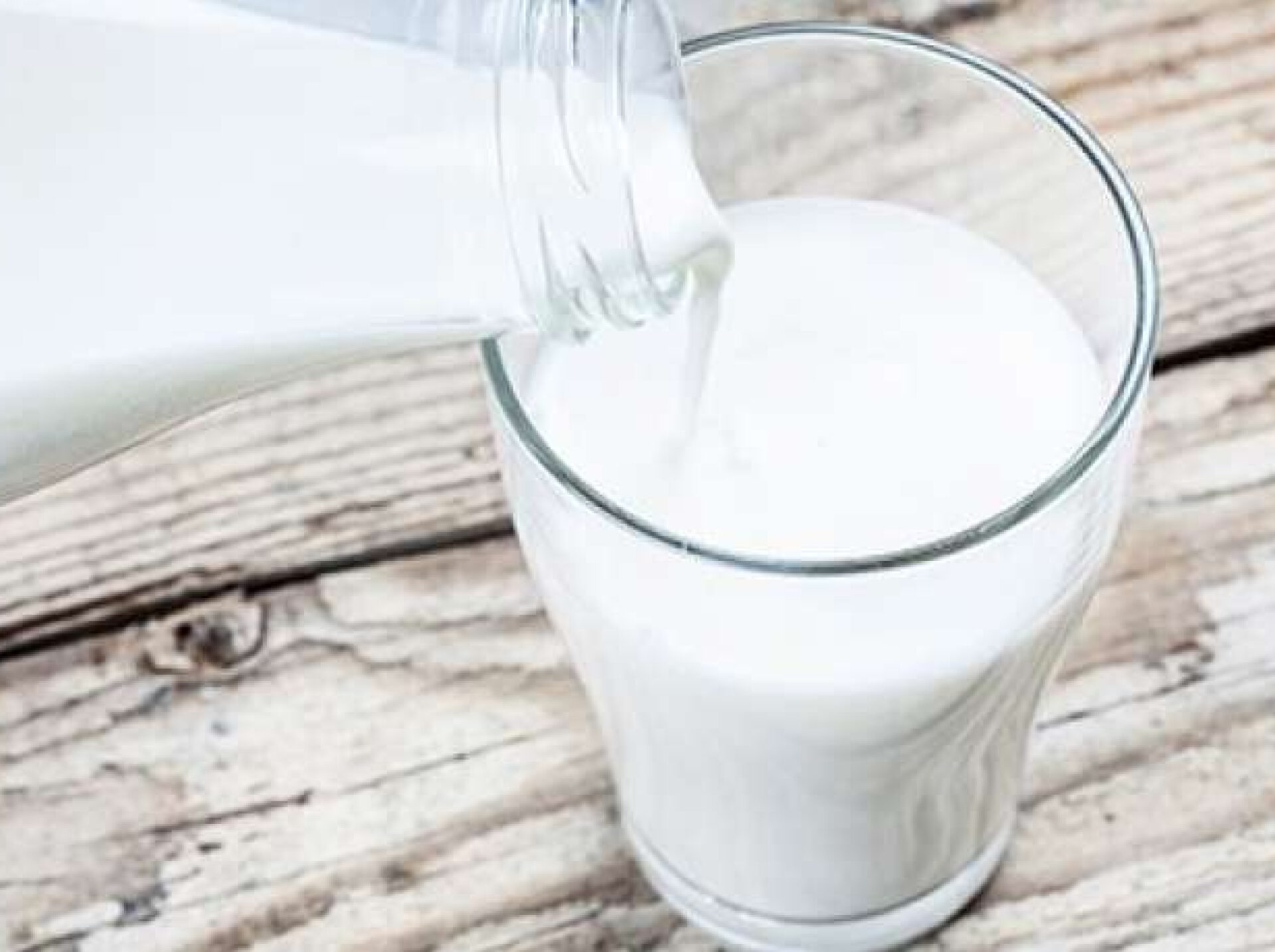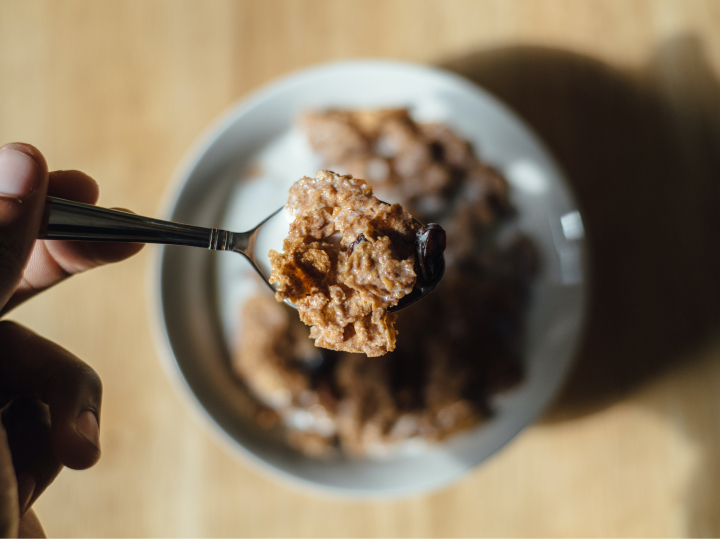Milk is Good for You. Here’s Why.
“Superfoods” are super popular — and now come in a growing range of bars, bites and balls to powders and flours. The trendy term stands out because we want the wide range of nutritional benefits many of these foods offer. But did you know that real dairy milk is one of the original superfoods? You’ve heard milk is good for you, and that’s because there are many benefits to milk’s nutrients that help you serve up a well-balanced eating plan.
But with more people interested in well-balanced eating plans, elimination diets are on the rise. These kinds of eating plans often remove dairy, which may cause people to wonder if milk is bad for you. The short answer is no, milk is not bad for you or your kids. In fact, milk is a nutrient-rich powerhouse. Each 8-ounce glass of milk contains 13 essential nutrients, including:
- Natural high-quality protein to help build and maintain lean muscle
- B vitamins (riboflavin, B-12, niacin and pantothenic acid) for energy
- Vitamin A, zinc, and selenium for a healthy immune system
- Bone-building nutrients, including calcium, vitamin D and phosphorus
- Iodine to help regulate metabolism
- Potassium to help maintain normal muscle function and regulate the balance of fluids in the body

Milk’s Nutrients Make a Difference
We know that nutrients in milk build strong bones and teeth. We learned it in school and our parents told us — “that’s why milk is good for you” over breakfast. The benefits of calcium used to be milk’s primary claim to fame, as well as a perfect pour with every meal. In fact, milk is the top food source of calcium in our diets.
But the benefits of drinking milk don’t end there. Milk is the top food source of three of the four nutrients many Americans, including children, lack in their diets — calcium, potassium and vitamin D. With fiber, these three nutrients are noted by the Dietary Guidelines for Americans as “nutrients of public health concern” because many Americans are not consuming enough in their diets — and these shortfalls in consumption are linked to health concerns.
It’s true, nutrition and health experts recommend kids and adolescents get more calcium and vitamin D from foods, like milk, for strong, healthy bones. What you may not know is that your bones continue to grow to their peak bone mass until around the late 20s, according to the National Institutes of Health, and they could keep growing through your early 30s. Adults should drink milk too, because it’s important to maintain strong bones throughout your life.
All varieties of milk — regular or organic, flavored or lactose-free — are safe and wholesome.
Is Milk Healthy for a Well-Balanced Diet?
Real milk is an important part of a healthy diet. Milk is a nutrient-rich powerhouse with no added sugar or preservatives, a combination hard to find from other food sources. The creamy, delicious taste of milk comes from just three simple ingredients: milk, vitamin A and vitamin D.
Studies repeatedly show the benefits of drinking milk (two to three servings each day). Essential nutrients found in milk help to build and maintain bone strength, and have been found to boost muscle growth and support healthy weight.
What Are the Benefits of Drinking Milk?
Decades of nutrition research suggest far-reaching health benefits of drinking milk as part of a balanced, nutritious diet. “Consuming dairy products provides health benefits – especially improved bone health,” according to ChooseMyPlate.gov. Current scientific evidence also suggests a potential benefit for weight management, diabetes and heart health.1-12
Even adding one more glass of milk may make a difference when it comes to type 2 diabetes, according to research in the American Journal of Clinical Nutrition. Researchers analyzed 17 studies that included data from more than 370,000 men and women to determine the relationship between dairy intake and diabetes risk and found that for nearly one extra daily glass (6.5 oz.), milk drinkers had a 13 percent lower risk of type 2 diabetes.
Studies also suggest that regularly drinking milk during the growing years (all the way through late teens/early twenties) is associated with greater height in the teen years, and greater bone size and bone mineralization. While other studies have linked regularly skipping milk to reduced height and increased fracture rates.
Is Milk Safe?
Yes, all dairy milk you buy in the grocery store is safe to drink — in fact, it’s one of the safest foods you can buy. Milk undergoes mandatory, rigorous testing — at the farm, before it is transported, and at the dairy processing facility — to ensure milk is wholesome and safe. You can be sure that the milk you buy never contains antibiotics.
In fact, little handling is done to milk from the farm to your refrigerator. One of the few steps before it reaches your table is pasteurization, a simple heat-treated process that ensures the milk you buy is safe to drink. Pasteurization does not reduce or alter the nutrients in milk. Milk is a choice you always can feel good about serving to your family.
If you are concerned about hormones in milk, there are many conventional and organic milk choices in the dairy case from cows that are not treated with growth hormones. To find these milk options, just check the label for indications that it’s “rBGH-free,” “rBST-free milk” or “from cows not supplemented with rBST.”
Whether you choose regular or organic milk, you can feel good about consuming all of the varieties of real milk that you can buy in the grocery store as part of a healthy, balanced diet.
What Experts Are Saying.
So what’s the deal, is milk really good for you? Yes, experts agree that the benefits of drinking milk make it an important part of a healthy eating plan. The Dietary Guidelines recommend most Americans get three servings of low-fat or fat-free milk and milk products every day as part of a healthy diet.
- 1. Marangoni F et al., Cow’s Milk Consumption and Health: a Health Professional’s Guide. Journal of the American College of Nutrition. 2019; 38(3):197-208.
- 2. Geraldo Gomes JM et al., High Calcium Intake from Fat-free Milk, Body Composition and Glycaemic Control in Adults with Type 2 Diabetes: a Randomized Crossover Trial. British Journal of Nutrition. 2019; 122(3):301-308.
- 3. Drouin-Chartier JP et al., Changes in Dairy Product Consumption and Risk of Type 2 Diabetes: Results from 3 Large Prospective Cohorts of US Men and Women. The American Journal of Clinical Nutrition. 2019; 110(5):1201-1212.
- 4. Pittas AG et al., The Role of Vitamin D and Calcium in Type 2 Diabetes: a Systematic Review and Meta-analysis. The Journal of Clinical Endocrinology and Metabolism. 2007; 92(6):2017-2029.
- 5. Aune D, Norat T et al., Dairy Products and the Risk of Type 2 Diabetes: a Systematic Review and Dose-response Meta-analysis of Cohort Studies. The American Journal of Clinical Nutrition. 2013; 98(4):1066-1083.
- 6. Malik VS, et al., Adolescent Dairy Product Consumption and Risk of Type 2 Diabetes in Middle-aged Women. The American Journal of Clinical Nutrition. 2011; 94(3):854-861.
- 7. Dalmeijer GW, et al., Dairy Intake and Coronary Heart Disease or Stroke – a Population-based Cohort Study. International Journal of Cardiology. 2013; 167(3):925-929.
- 8. Wang L, Manson JE et al., Dietary Intake of Dairy Products, Calcium and Vitamin D and the Risk of Hypertension in Middle-aged and Older Women. Hypertension. 2008; 51(4):1073-1079.
- 9. Shahar DR, et al., Dairy Calcium Intake, Serum Vitamin D, and Successful Weight Loss. The American Journal of Clinical Nutrition. 2010; 92(5):1017-1022.
- 10. Djousse L, et al., Influence of Saturated Fat and Linolenic Acid on the Association Between Intake of Dairy Products and Blood Pressure. Hypertension. 2006; 48(2):335-341.
- 11. Rietsema S, et al., Effect of High Compared with Low Dairy Intake on Blood Pressure in Overweight Middle-aged Adults: Results of a Randomized Crossover Intervention Study. The American Journal of Clinical Nutrition. 2019; 110(2):340-348.
- 12. Lana A, Banegas JR et al., Association of Dairy Consumption and 24-hour Blood Pressure in Older Adults with Hypertension. The American Journal of Medicine. 2018; 131(10):1238-1249.




